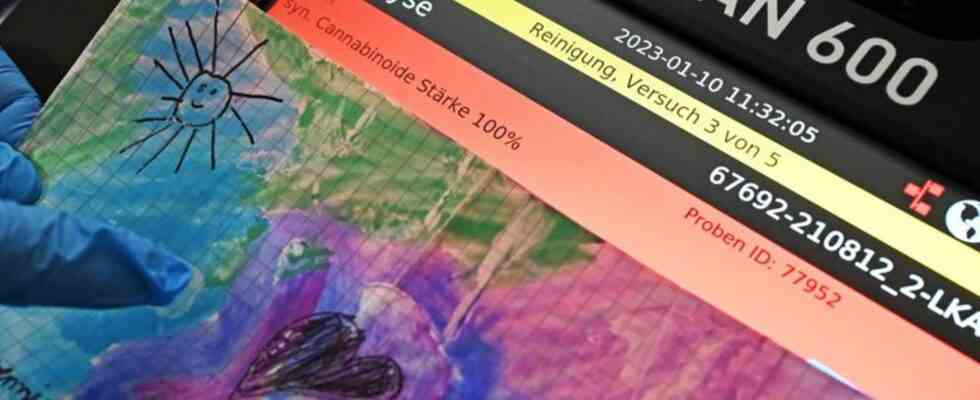penitentiary
“Drug scanners” in prisons often work
For example, the drugs are vaporized on paper and are barely visible to the naked eye. photo
© Uli Deck/dpa
“Drug scanners”, which are still rare nationwide, already had 150 hits in prisons in Baden-Württemberg last year.
“Drug scanners”, which are still rare nationwide, already had 150 hits in prisons in Baden-Württemberg last year.
When the two modern detectors were used, new psychoactive substances such as synthetic cannabinoids in particular were detected, said State Justice Minister Marion Gentges (CDU) of the German Press Agency. According to the information, the drugs usually come by post, are vaporized on paper – such as a colourful, seemingly harmless child’s drawing – or dripped onto tobacco and are hardly visible to the naked eye.
The wine box-sized scanners have been in the detention centers in Bruchsal and Heilbronn for a year. Suspicious documents from other correctional facilities (JVA) are also being examined, as Gentges reported.
JVA employees take samples with a test strip, which they then place in the device to receive an analysis after a few seconds. “If the paper is soaked with drugs, a red alarm signal lights up,” explained the CDU minister. “The procedure is much simpler and more pragmatic than sending objects to an external laboratory whenever there is a suspicion.”
According to the Justice Department, the devices also detect other narcotics, including cannabis and cocaine, in addition to synthetic cannabinoids. According to this, around 830 different substances can currently be recognized via a database. The leasing devices cost about 1200 euros per scanner and month, two more devices have already been ordered according to the ministry.
Rhineland-Palatinate is already further along: after a successful pilot project, scanners are now being used across the country in prisons to track down cleverly smuggled designer drugs.

